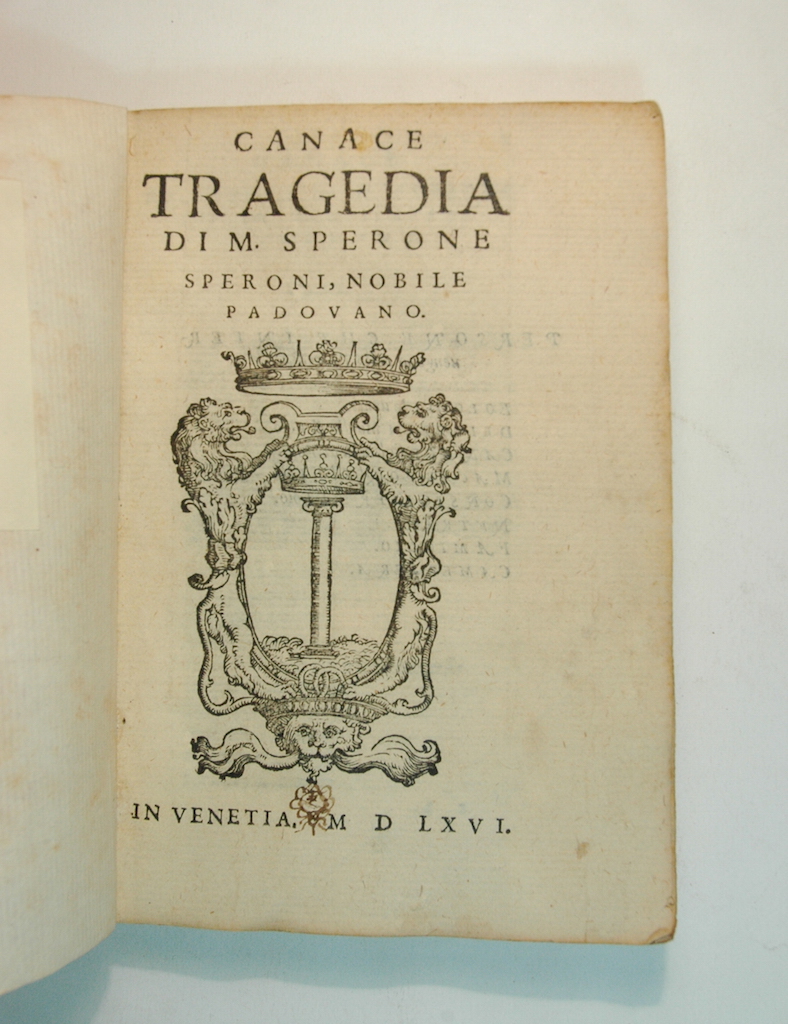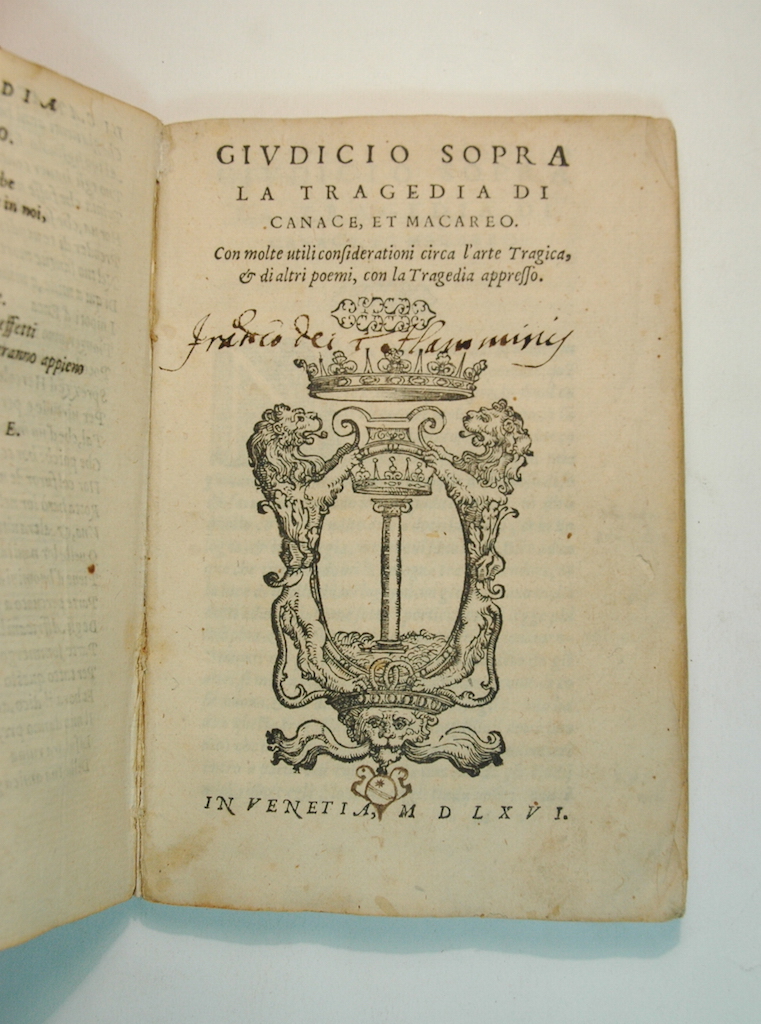SPERONI, Sperone [with] GIRALDI, Giambattista
Canace. Tragedia. (with) GIRALDI, Giambattista. Giudicio Sopra la Tragedia di Canace et Macareo
Lyon, np. [D. Farri?], 1566£1,150.00
8vo. two works in one, ff. 48 + 54 (ii) last two blank. Italic letter. Historiated initials, printer’s woodcut device on both titles, “Franco di flamminis” ms. in contemporary hand on second, small ms. armorial device below, extensive marginalia in the same hand in the second work, bookplate of Allardyce Nicoll. Light age yellowing, the odd marginal spot. A good copy in C18 marbled paper wraps.
Excellent edition, with Giraldi’s important ‘guide’, of Speroni’s most famous, influential and controversial play, first published in 1546. A versatile and extremely influential man of letters, Speroni was known for his literary criticism, in the many prose dialogues and treatises he wrote over his long career, and for this Senecan revenge tragedy, Canace, which instigated a feud among the Italian literati on the tragic genre that lasted for decades. Sperone was born in Padua and taught in various capacities at the city’s university, where he was acquainted with Pietro Bembo, Giraldi, and Tasso, and was at the center of the powerful literary circle at Padua. This is a verse tragedy, undivided into scenes, based on the Greek legend of Canace, daughter of Aeolus, who was forced by her father to commit suicide for having fallen in love with her brother, Macar. It was composed for Padua’s literary academy, the Accademia degli Infiammati, and was printed at Firenze in 1546. The work was highly polemical, the subject of incestuous twins was always going to be controversial, and was performed only once. “it was Speroni’s Canace that most exploited the incest theme. In fact, Speroni theorized that incest may not be an evil: but even if it is, an evil hero may evoke a catharsis. In the critical battle over the Canace, one thing is clear: incest is justified as a legitimate way to arouse pity and fear… Canace was, nevertheless castigated for its lasciviousness.” Richard Fabrizio. The public reaction led Speroni to write an Apologia (1550), which he never finished. It is accompanied by Giraldi’s long essay on the work and on the nature of tragedy in both theatre and poetry in general. This was long attributed to Cavalcanti but is now considered Giraldi’s, himself an influential playwright. He is renowned as the author of the ‘Hecatommithi’ a collection of tales told in the manner of Boccaccio which provided the plots of Measure for Measure and Othello. A good copy of one of the best editions of this work.
BM STC C16th It. p. 636. cf. Gamba 1653. Fontanini, I, p. 507.In stock






